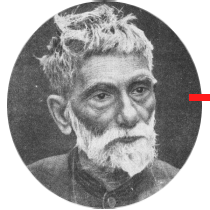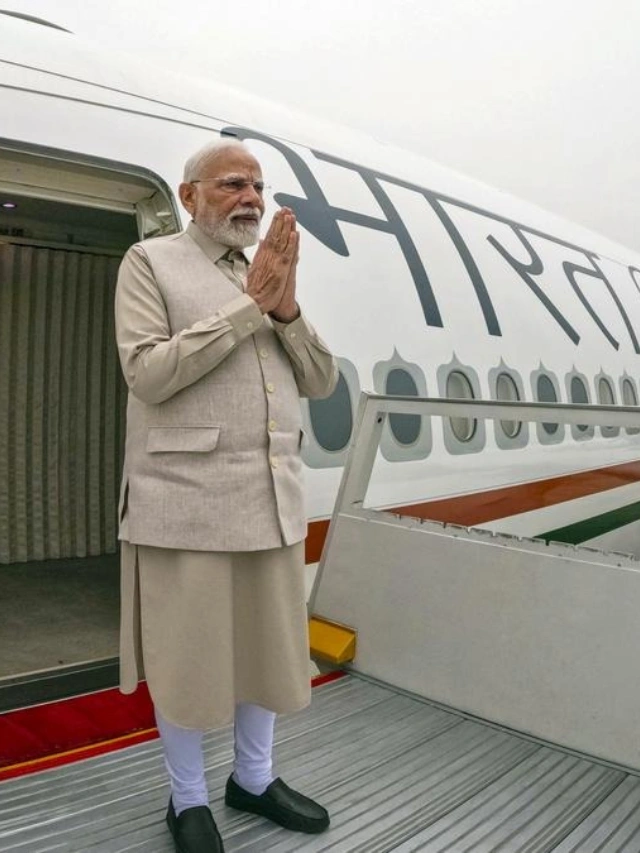Prafulla Chandra Ray
Prafulla Chandra Ray, born on 2 August 1861, created the first modern Indian research school in chemistry. His groundbreaking work earned him the title “Father of Indian Chemistry”. He started Bengal Chemicals & Pharmaceuticals with just 700 INR in 1892, which grew to become India’s first pharmaceutical company. His brilliance shone through his work on organic and inorganic nitrites, and people called him the ‘Master of Nitrites’.
People knew him respectfully as Acharya Prafulla Chandra. He found the stable compound Mercurous Nitrite in 1895, marking a historic achievement. His passion for chemical research led to more than 150 original research articles in any discipline of chemistry. Bengal Chemical Works (later Bengal Chemicals and Pharmaceuticals) became a cornerstone in the renaissance of both Bengal and India. His publication ‘The History of Hindu Chemistry’ documented India’s scientific heritage in two volumes released in 1902 and 1908.
CEO’s | Actors | Politicians | Sports Stars
Ray’s influence exceeded the boundaries of laboratory research when he actively supported the Swadeshi Movement of 1905. Despite his scientific achievements, he stayed connected to his roots in the village of Raruli-Katipara, now in Bangladesh, where he was born as the younger of two brothers. His impact reached beyond science into industry, education, and national self-reliance. He emerged not just as a prominent Indian scientist and educator but also as a patriot who helped shape modern India.

From Raruli to Calcutta: The Early Years
Family background and village life
Noble ancestry: Prafulla Chandra Ray was born on 2 August 1861 in Raruli-Katipara, a small village in the Jessore district (now in Bangladesh). His distinguished Bengali Hindu family had a remarkable lineage. His great-grandfather Maniklal’s role as a dewan (collector) in the British East India Company’s districts of Krishnanagar and Jessore helped him amass substantial wealth. His grandfather Anandlal managed the records of the Jessore division. The family’s reputation for wealth, capability, and enthusiasm dated back to the 17th century.
Progressive parents: Ray’s father, Harish Chandra Raychowdhury, was a zamindar (landlord) who held liberal views. Harish Chandra’s education spanned Persian and English, with working knowledge of Sanskrit and Arabic. He played the violin skillfully and loved music deeply. Ray’s mother, Bhubanmohini Devi, came from a taluqdar’s family and had received good education that shaped her enlightened outlook. Villagers nicknamed Prafulla Chandra “Fulu,” and he grew up as the third of seven children in this cultured household.
Cultural environment: Harish Chandra built an atmosphere that celebrated learning and national awareness. He demonstrated his forward-thinking by bringing English-medium education to the village. He set up schools for both boys and girls—his wife and sister learned at the girls’ school. The family’s extensive home library would later become a significant resource during Ray’s health-related break from school.
Early education and health challenges
Educational beginnings: Ray started his education in 1866 at his father’s village school. The family moved to Calcutta in 1870, where nine-year-old Ray joined the Hare School. A severe case of dysentery soon disrupted his studies.
Health setback: Ray had to return to his village in 1874 to recover in “an unpolluted rural environment”. His formal education paused for about two years. The illness left lasting effects—he dealt with chronic dyspepsia and insomnia throughout his life. Notwithstanding that, Ray turned his recovery period into a chance to read extensively from his father’s well-stocked library. He dove into English literature classics and historical works in English and Bengali. He taught himself Latin and Greek, and learned about England’s, Rome’s, and Spain’s histories.
Academic comeback: Ray enrolled at the Albert School in Calcutta in 1876, founded by Brahmo reformer Keshub Chandra Sen. His teachers found that his focused self-study had put him way beyond his classmates’ level. His academic excellence showed when he passed the 1878 Entrance Examination with First Division. He began his higher studies at the Metropolitan Institution, which later became Vidyasagar College.
Influence of Brahmo Samaj and reformist ideals
Spiritual foundation: Ray’s family kept strong ties with the Brahmo Samaj, a connection he maintained lifelong. He attended Keshub Chandra Sen’s Sunday evening sermons during his Albert School days and drew inspiration from Sen’s Sulabha Samachar publication. The Brahmo Samaj’s liberal views and Sen’s teachings gave young Ray “the spirit of service and sacrifice” that shaped his future.
Intellectual mentorship: Surendranath Banerjee, a prominent Indian nationalist and future Indian National Congress president, taught Ray at the Metropolitan Institution. Banerjee’s passionate ideals about service and India’s revival deeply influenced Ray, who embraced these values.
Democratic sensibilities: Ray respected Sen deeply but wanted a more democratic setting than the mainstream Brahmo Samaj offered. He joined the Sadharan Brahmo Samaj in 1879, a more flexible branch of the original group. This choice reflected Ray’s independent thinking and showed his steadfast dedication to progressive ideals backed by practical action.
A Scholar Abroad: Education in Edinburgh
Winning the Gilchrist Scholarship
Linguistic prowess helped Prafulla Chandra Ray secure his future. In 1882, he competed for the prestigious Gilchrist Prize Scholarship. The award needed candidates to know at least four languages. Ray exceeded this requirement with his command of Bengali, English, Latin, French, and Sanskrit. He outperformed others in a tough all-India competitive exam and won one of just two scholarships. This achievement sent the 21-year-old Ray to Britain for higher education.
Journey to Scotland started with Ray’s arrival in London. He soon gained admission to the University of Edinburgh. The next six years abroad shaped his scientific outlook and future contributions significantly. Ray’s passion for history and political science stayed strong while he studied in Edinburgh.
Life and studies in Scotland
Academic excellence defined Ray’s Scottish chapter. He thrived in his scientific work under the guidance of notable chemist Alexander Crum Brown. His hard work led to a BSc degree in Chemistry in 1885. Ray left a lasting impression on his peers. Geographer Hugh Robert Mill praised him as “the most enlightened Hindu I ever met, speaking and writing English with grace and fluency, and singularly at home in European modes of thought”.
Critical thinker Ray showed his depth by entering a university essay competition about “India before and after the Mutiny.” He boldly criticised British Raj policies and explained what it all means if reactionary attitudes continued. William Muir, the University’s Principal and former lieutenant-governor in India, praised his work despite its challenging views. The Scotsman newspaper highlighted that Ray’s essay “contains information in reference to India which will not be found elsewhere, and is deserving of the utmost notice”.
Doctoral research and early publications
Scientific foundation grew stronger as Ray began his doctoral studies in inorganic chemistry. He focused on investigating double sulphates. His thesis “Conjugated Sulphates of the Copper-magnesium Group: A Study of Isomorphous Mixtures and Molecular Combinations” showed his growing expertise in chemical research. Edinburgh University awarded him the Doctor of Science degree in 1887.
Academic recognition came quickly after his doctorate. Ray won the Hope Prize Scholarship, which let him continue his research for another year. He made the most of this time. His first research article on conjugated sulphates appeared in the proceedings of the Royal Society of Edinburgh in 1888. His peers elected him Vice-President of the University of Edinburgh Chemical Society before his return to India – proof of their deep respect.
Scientific legacy took root during these early years. Ray’s Edinburgh education laid the groundwork for an impressive research career that produced more than 100 papers in prestigious journals. He returned to India in 1888 after six years in Britain, ready to advance science in his homeland.
The Chemist Emerges: Breakthroughs in Science
Discovery of mercurous nitrite
Accidental breakthrough: Prafulla Chandra Ray started his journey as an assistant professor of Chemistry at Presidency College in 1889 after returning to India in 1888. His biggest scientific breakthrough came unexpectedly in 1895. He found mercurous nitrite by chance while trying to make water-soluble mercurous nitrate to synthesise calomel. Yellow crystals appeared when dilute aqueous nitric acid reacted with excess mercury. Nature magazine quickly picked up this remarkable finding after its first publication in the Journal of the Asiatic Society of Bengal.
Scientific significance: Mercurous nitrite’s discovery stood out because it combined two unstable ions into a stable compound. Scientists today rarely find stable mercury(I) complexes. These compounds tend to split into mercury(II) and metallic mercury in solution. Ray called this breakthrough “a new chapter in my life”. This work earned him recognition across the field of inorganic chemistry.
Mastery of nitrites and inorganic chemistry
Methodical researcher: Ray’s original discovery led him to break down nitrite chemistry further. He studied nitrites and hyponitrites of various metals and looked at nitrites of ammonia and organic amines. His work showed that nitrites were much more stable than scientists thought. British chemist Henry H. Armstrong gave him the nickname “Master of Nitrites”.
Ammonium nitrite synthesis: Ray successfully made pure ammonium nitrite. He used double displacement between ammonium chloride and silver nitrite. His experiments showed that pure ammonium nitrite could sublimate without breaking down at 60°C. This finding challenged common scientific beliefs. Nobel laureate William Ramsay praised this achievement.
Founding the Indian School of Chemistry
Institutional pioneer: Ray built India’s first School of Chemistry in 1924. This school became the foundation for chemical research in India. His 27-year tenure (1889-1916) at Presidency College saw him promote research despite limited resources. Students loved his chemistry lectures, which came alive with demonstrations and historical stories.
Research diversity: Ray pushed his students to find their interests in organic and physical chemistry, though he specialised in inorganic chemistry. His research grew at Calcutta University’s College of Science. There, he studied compounds of gold, platinum, and iridium with mercaptyl radicals and organic sulphides.
Mentorship of future Indian scientists
Influential teacher: Ray’s bond with his students was special. He described these connections as “subtle as those of chemical affinity”. Jatindranath Sen became his first PhD student in 1899. Many of his students went on to make their mark in Indian science.
Scientific legacy: Ray published over 100 research papers in top journals throughout his career. His influence went beyond his own achievements. He created a lasting research tradition in India. His notable students included chemists J.C. Ghosh, N.R. Dhar, and J.N. Mukherjee. Physics pioneers Satyendra Nath Bose and Megh Nad Saha also learned from him.
Beyond the Lab: Industry, Reform and Nationalism
Founding Bengal Chemical and Pharmaceutical Works
P.C. Ray started Bengal Chemical Works in 1892 with just ₹700 by renting a house at 91 Upper Circular Road, Calcutta. The business grew faster than expected. By 1901, it became a limited company under the name Bengal Chemical and Pharmaceutical Works Ltd. This pioneering venture became India’s first pharmaceutical company. The company’s product line expanded to include medicines, chemicals, fire extinguishers, surgical instruments, talcum powder, and various soaps.
Support for Swadeshi and Indian enterprise
Ray’s industrial pursuits stemmed from his strong economic vision. He believed industrialization was a vital step toward India’s progress. Bengal Chemical’s creation helped promote entrepreneurship among Bengali youth. This meant they wouldn’t need to depend on foreign rulers for employment. Ray’s business acumen led him to support several other ventures. These included National Tannery Works, Bengal Enamel Works, and Calcutta Pottery Works.
Role in social reform and education
Ray’s wealth served a greater purpose through his generous philanthropy. He contributed regularly to Sadharan Brahmo Samaj and Brahmo Girls’ School. The Nagarjuna Prize, which he created in 1922, recognised outstanding work in chemistry. He established another award in 1937, named after Ashutosh Mukherjee, for exceptional work in zoology or botany. His most significant humanitarian effort came during Bengal’s severe floods in 1923. He hosted the Bengal Relief Fund to help those affected.
Support for revolutionaries and nationalists
Ray’s steadfast dedication to India’s freedom struggle defined his patriotism. He actively supported the Swadeshi Movement of 1905. He called using foreign-made products “a crime of treason against India”. British government documents labelled him a “Revolutionary in the garb of a Scientist”. His factories became safe havens for nationalists, providing them with food and shelter. This showed his practical support for the independence movement went beyond mere words.
Legacy of a Pioneer: Honours and Influence
Awards and recognitions received
Distinguished titles marked Prafulla Chandra Ray’s remarkable career. He received the Companion of the Indian Empire (CIE) in 1912 and earned his Knighthood in 1919. Five prestigious institutions awarded him honorary doctorate degrees, including Durham University, Banaras Hindu University, University of Dhaka, University of Allahabad, and University of Calcutta. The Royal Society of Chemistry (UK) recognised his contributions by placing their first Chemical Landmark Plaque outside Europe on his 150th birth anniversary.
Effect on Indian science and industry
Scientific pioneer describes how India remembers Ray, who earned the title “the Father of Indian Chemistry”. He supported practical industrial applications of chemistry beyond theoretical research. His autobiography “Life and Experiences of a Bengali Chemist,” published between 1932-1935, chronicled the progress of Indian science. Ray mentored numerous students who became distinguished scientists, including Prof. Asima Chatterjee, who later pioneered research on Indian medicinal plants.
Contributions to Ayurveda and ancient chemistry
Historical scholar reflects Ray’s deep interest in ancient science. He studied Sanskrit texts like Charaka Samhita and Sushruta Samhita at age 35. His masterwork “The History of Hindu Chemistry” (1902, 1908) unveiled ancient India’s rich knowledge of metallurgy and medicine in two volumes. His collaboration with Pandit Harischandra Kavyaratna to edit “Rasarnava” showed his dedication to Rasashastra.
Establishing scientific institutions
Institutional architect highlights Ray’s organisational legacy. He founded The Indian Chemical Society in 1924 and created the Indian Chemical Manufacturers Association in 1938. The Indian Science Congress elected him as General President in 1920. Ray spent his final years living simply in a laboratory room at Calcutta University, which now houses the P.C. Ray Museum.
Key Takeaways
Discover how a village boy from Bengal transformed into India’s pioneering chemist, industrialist, and nationalist, leaving an indelible mark on science and society.
- Ray discovered mercurous nitrite in 1895, earning him the nickname “Master of Nitrites” and establishing his reputation in global chemistry circles.
- Founded Bengal Chemical Works in 1892 with just ₹700, creating India’s first pharmaceutical company and proving indigenous industrial capability.
- Established the first Indian School of Chemistry, mentoring future luminaries like Satyendra Nath Bose and creating a lasting research tradition.
- Combined scientific excellence with patriotic service, supporting the Swadeshi Movement whilst being labelled a “Revolutionary in the garb of a Scientist.”
- Published over 100 research papers and “The History of Hindu Chemistry,” documenting ancient India’s scientific heritage for modern scholars.
Ray’s legacy demonstrates that true scientific leadership extends beyond laboratory discoveries to encompass industrial innovation, educational reform, and national service. His journey from rural Bengal to international recognition proves that dedication, coupled with social consciousness, can transform both individual destiny and national progress.
Read more: Journey of Meghnad Saha.
FAQ:
What invention / discovery is Prafulla Chandra Ray known for?
He is best known for the discovery of mercurous nitrite in 1896, and for pioneering research in nitrites and hyponitrites of metals. He also founded India’s first pharmaceutical company, Bengal Chemicals & Pharmaceuticals.
What was Prafulla Chandra Ray’s education?
- He earned a BSc and DSc from the University of Edinburgh.
- He initially studied at the University of Calcutta, and completed his BA before going to Edinburgh for advanced research.
What books did Prafulla Chandra Ray write?
Some of his notable works include:
- A History of Hindu Chemistry from the Earliest Times to the Middle of the Sixteenth Century
- Life and Experience of a Bengali Chemist (autobiography)
- Chemical Research in India
- The Origin and Growth of the Indian Pharmaceutical Industry
What was Prafulla Chandra Ray’s contribution in chemistry?
He established the first modern Indian research school in chemistry, advanced the study of nitrites and inorganic chemistry, and founded the first Indian chemical & pharmaceutical company. His research expanded knowledge on metallic nitrites and he trained many prominent scientists.
When was Prafulla Chandra Ray born (birthday)?
He was born on 2 August 1861.
What was the name of Prafulla Chandra Ray’s mother?
His mother’s name was Bhubanmohini Devi.
What awards did Acharya Prafulla Chandra Ray receive?
He was honoured with:
- Companion of the Order of the Indian Empire (CIE)
- Knight Bachelor
- Fellowships of various societies (Chemical Society, Royal Asiatic Society, National Institute of Sciences of India)
- Honourary doctorates from various universities
- The Royal Society of Chemistry installed a Chemical Landmark Plaque in his honour (first outside Europe)




